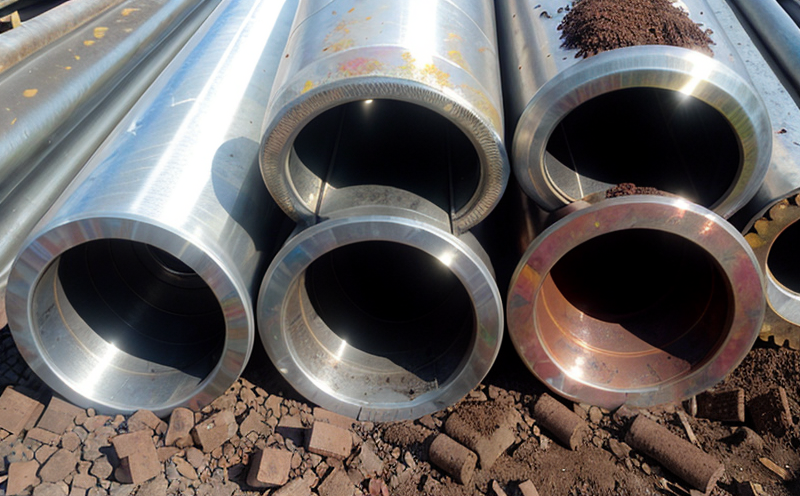ASTM F963 Toxic Metal Migration from Textile Toys
The ASTM F963 standard is a cornerstone of safety regulations for toys and child care articles, ensuring that products are free from harmful materials. One critical aspect addressed by this standard is the migration of toxic metals from textile components into children's environments. This section delves deeply into how ASTM F963 specifically addresses the issue of toxic metal migration from textiles used in toys.
The first step in conducting a compliance test under ASTM F963 involves understanding that the standard includes provisions for both metallic and non-metallic materials. For textile components, this means ensuring that the fabrics do not release harmful metals upon contact with the child's skin or via ingestion. The test protocol outlined by ASTM F963 is designed to mimic real-world conditions, such as the interaction between a toy and a child.
The testing process typically involves soaking the textile component of the toy in water for a specified period under controlled temperature conditions. After this time, the sample undergoes analysis through atomic absorption spectroscopy (AAS) or similar techniques to quantify the amount of any detectable metals that have migrated into the solution. The limits set by ASTM F963 are stringent and reflect the international consensus on safe exposure levels for children.
Another key aspect is the use of certified reference materials to calibrate the testing instruments, ensuring accuracy across different laboratories. Compliance with ASTM F963 also requires detailed documentation of each test run, including the type of textile used, the duration of the immersion period, and any deviations from standard procedures that may have occurred.
The results are then compared against the threshold levels set by ASTM F963 for toxic metals like lead, cadmium, chromium, nickel, and others. The presence of even trace amounts can trigger a recall or design modification to prevent potential harm. This stringent approach underscores the importance of rigorous testing in ensuring toy safety.
In summary, ASTM F963 provides a comprehensive framework for evaluating textile toys' compliance with regulatory standards regarding toxic metal migration. It ensures that products meet the highest safety benchmarks and contribute positively to public health and welfare.
Environmental and Sustainability Contributions
The pursuit of sustainable practices in toy manufacturing is becoming increasingly important, especially as consumers demand more eco-friendly products. Compliance with ASTM F963 aligns with broader environmental goals by reducing the risk of toxic metal exposure through textile toys. This not only protects children's health but also contributes to a safer environment for all.
By adhering to this standard, manufacturers can ensure that their products are safe from the outset, avoiding the need for costly recalls and potential damage to brand reputation. The testing process itself encourages transparency and accountability within the supply chain, promoting responsible manufacturing practices.
The use of non-toxic materials in compliance with ASTM F963 also supports environmental sustainability by reducing waste generation and minimizing the impact on natural resources. This is particularly significant given the growing emphasis on circular economy principles across various industries. By ensuring that textile components do not release harmful metals, manufacturers can contribute to a more sustainable toy lifecycle.
Moreover, compliance with ASTM F963 encourages innovation in material science and design, leading to safer and more environmentally friendly products. This shift towards sustainability benefits both the industry and society as a whole by fostering a culture of responsibility and care.
In conclusion, adherence to ASTM F963 is not just about meeting regulatory requirements but also about embracing sustainable practices that contribute positively to environmental health and welfare.
Competitive Advantage and Market Impact
The global toy market is highly competitive, with brands vying for the attention of parents and children alike. Meeting stringent safety standards like ASTM F963 can provide significant advantages in this competitive landscape. By demonstrating a commitment to safety and quality, manufacturers can build trust with consumers, which is crucial for establishing long-term relationships.
Compliance with ASTM F963 also opens up access to international markets where regulatory compliance is essential. Many countries have their own standards that align closely with ASTM F963 or use it as a benchmark. By meeting these requirements, toy manufacturers can ensure smooth entry into these markets, avoiding costly delays and potential barriers.
In the long term, adherence to such rigorous standards can enhance brand reputation and customer loyalty. Parents are increasingly prioritizing safety when choosing toys for their children, making compliance with ASTM F963 a key differentiator in an overcrowded market. This focus on safety not only enhances brand image but also fosters a sense of responsibility towards the community.
Furthermore, companies that comply with ASTM F963 can leverage these efforts to promote their commitment to sustainability and social responsibility. This can be particularly effective in attracting environmentally conscious consumers who are seeking ethically produced goods. By integrating compliance into broader corporate strategies, toy manufacturers can position themselves as leaders in responsible business practices.
In summary, meeting the stringent requirements of ASTM F963 offers numerous competitive advantages that contribute to market success and long-term sustainability.
Use Cases and Application Examples
- Child Safety: Ensures textiles used in toys do not release harmful metals, protecting children from potential health risks.
- Sustainable Manufacturing: Promotes the use of non-toxic materials that are safer for both production environments and end users.
- Market Access: Facilitates entry into international markets by meeting regulatory standards across different countries.
- Innovation in Design: Encourages the development of safer, more innovative products that meet high safety benchmarks.
- Social Responsibility: Demonstrates commitment to public health and welfare through responsible manufacturing practices.
The application examples above highlight how compliance with ASTM F963 can be beneficial across various aspects of toy production. By focusing on these areas, manufacturers can ensure that their products are not only safe but also contribute positively to environmental sustainability.





